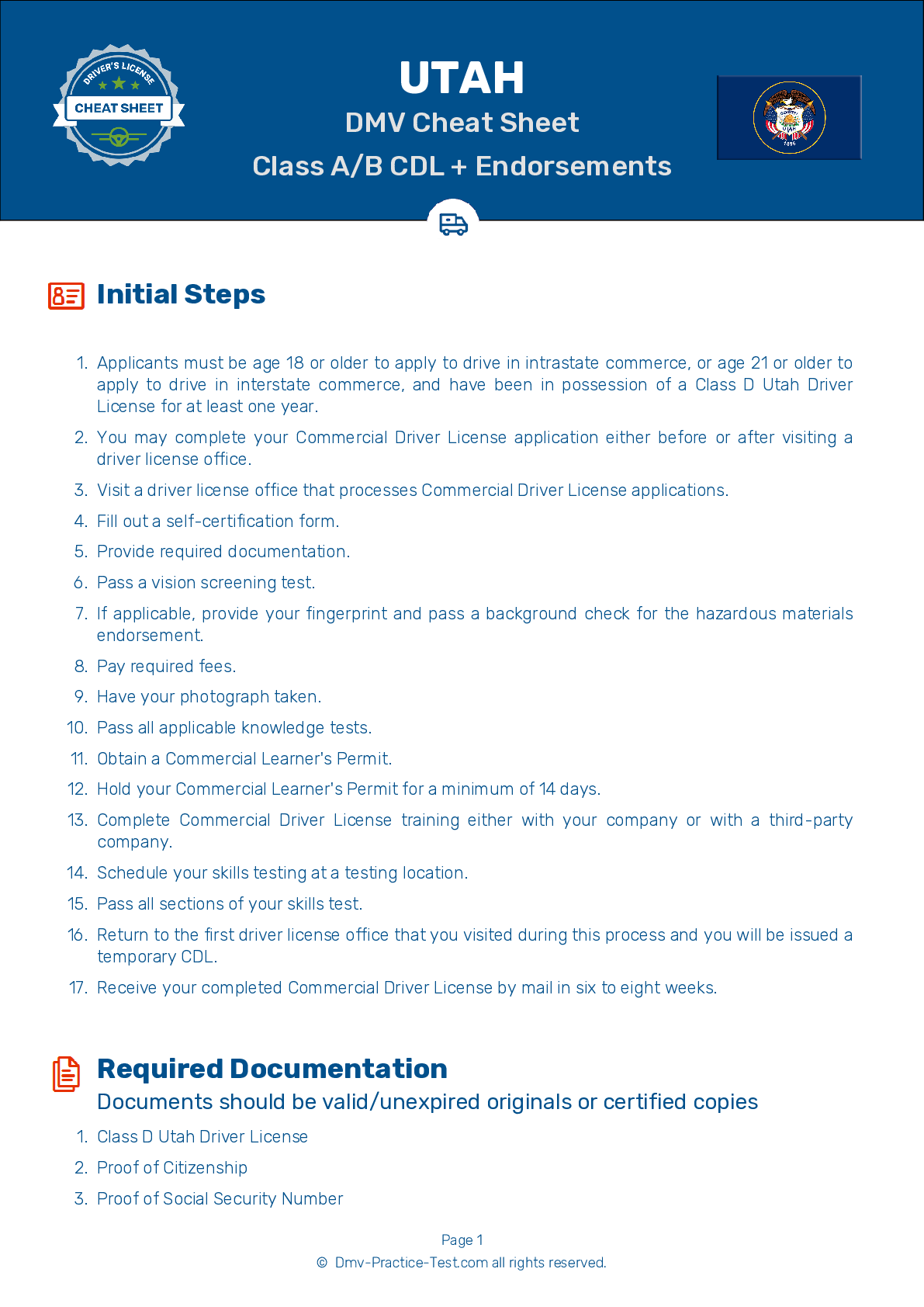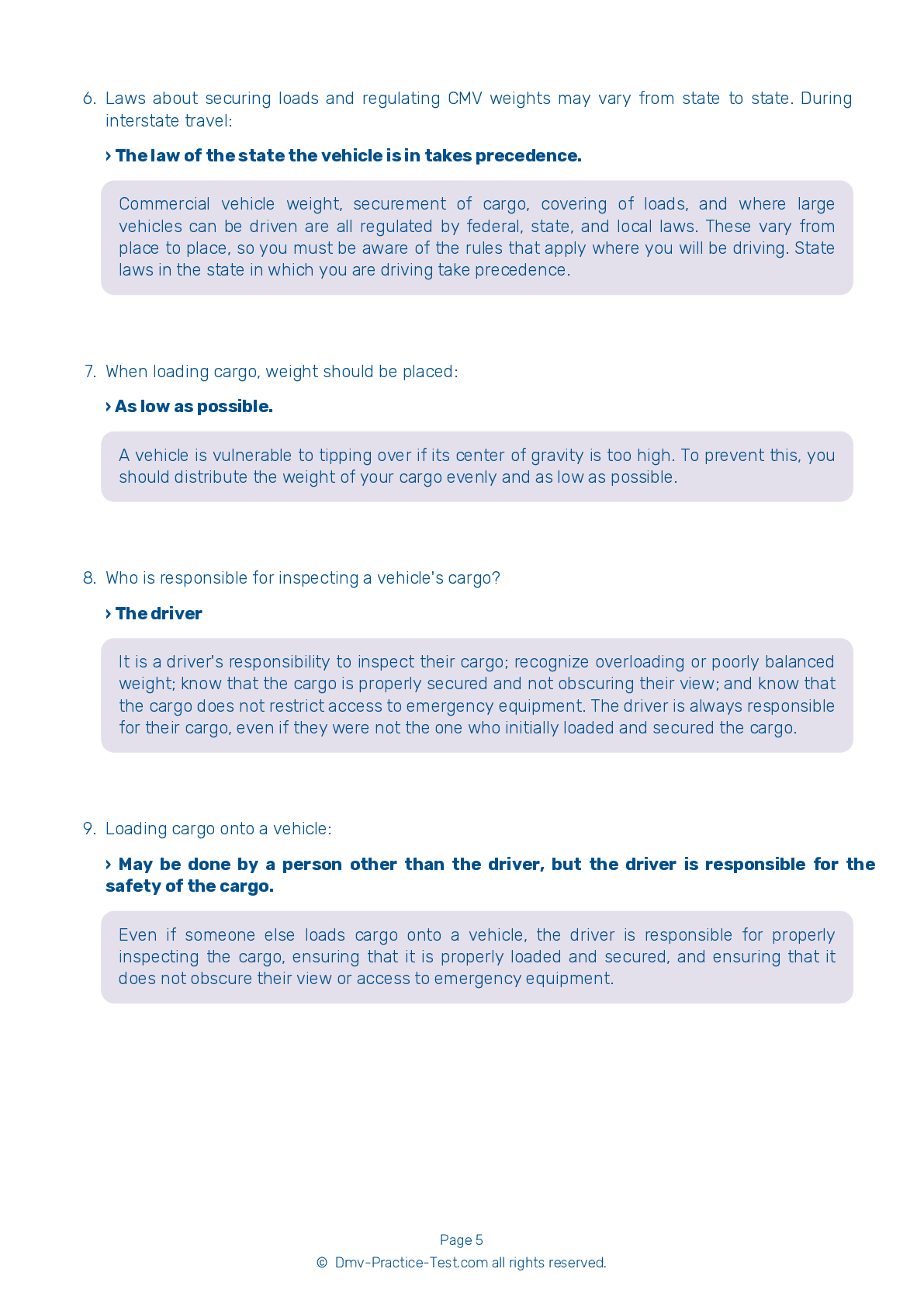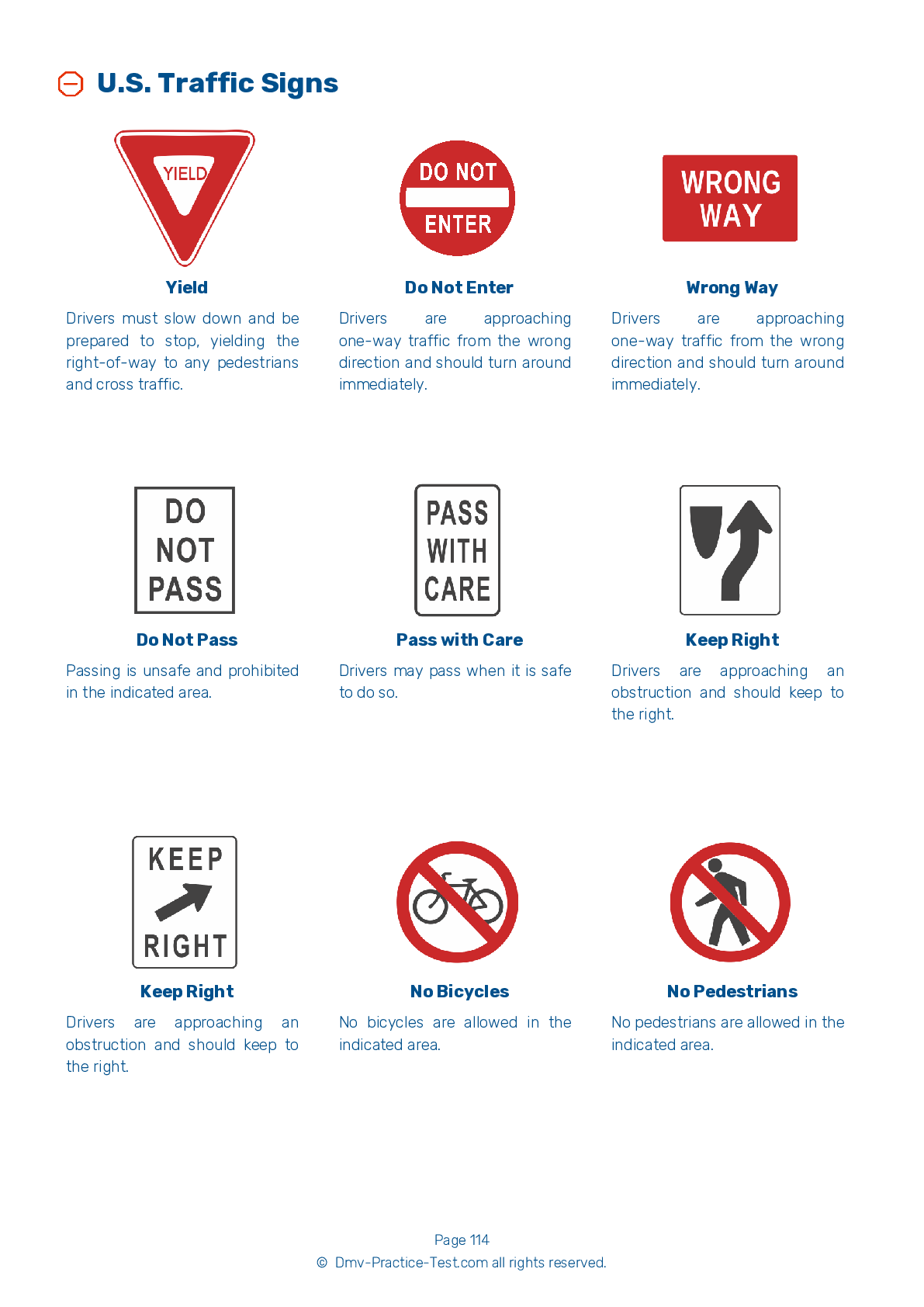HazMat #1
Hazmat Test | Utah 2025 #1 Page 2 of 5
On our website, we provide FREE practice - CDL hazmat test online! The official exam test consists of several obligatory parts, with all of them checking your knowledge of different blocks of road rules. If you need to obtain a UT CDL hazmat endorsement in 2025, practice as much as possible. Free sample tests published on our website will help you check and improve your knowledge and boost your grades. Please bear in mind that Utah requirements for issuing a hazmat endorsement for CDL may vary from those established in other states.
30
24
20
7 . The person loading a tank with hazardous materials must be all of the following, except:
Authorized to move the tank.
The person in charge of loading or unloading a hazardous materials cargo tank must ensure that a qualified person is always supervising the process. The supervisor must be alert; have a clear view of the tank; be within 25 feet of the tank; know the hazards of the involved materials; know the procedures to follow in the case of an emergency; and be authorized to and capable of moving the tank.
8 . If a product requires a "Poison Inhalation Hazard" placard, the placard must be used when transporting:
The product in a leaking container.
For applicable materials, the "Poison Inhalation Hazard" placard and the appropriate hazard class placard must always be displayed, even for small amounts of the materials.
9 . How must a shipper notify a driver of the risks associated with their cargo?
By placing orange dots on packages
Shippers of hazardous cargo must alert drivers and others to relevant hazards through proper shipping papers, hazard warning labels on packages, emergency response information, and placards.
10 . Who must label hazardous materials?
The shipper of hazardous materials is responsible for packaging, marking, and labeling the materials. They must supply the warning placards.
11 . If a shipping paper describes both hazardous and non-hazardous materials, the items can be distinguished by:
The hazardous materials being written larger than the non-hazardous materials.
If a shipping paper describes both hazardous and non-hazardous materials, the hazardous materials must be distinguished in one of three ways. They must be entered first on the shipping paper, highlighted in a contrasting color, or marked with an "X" in a column titled "HM."
12 . During a cargo fire, opening the trailer doors may actually cause the fire to expand because doing so:
When experiencing a cargo fire, it may be a bad idea to open the doors to the trailer. Doing so allows oxygen to enter the area, potentially causing the fire to flare up and expand.
2025 Utah | Frequently Asked Questions
To acquire a CDL Hazmat endorsement in Utah, you must first have a valid Utah CDL. Then, pass the Hazardous Materials Endorsement Knowledge Test, submit to a federal background check and fingerprinting by the Transportation Security Administration (TSA). Finally, you must pay the required endorsement fee. It's recommended to study the Utah CDL Handbook beforehand.
To obtain a CDL Hazmat license, you must have a valid Commercial Driver's License (CDL). You should be at least 21 years old, have a clean driving record, and pass a physical examination. Additionally, you must pass the Hazardous Materials Endorsement Knowledge Test and a TSA background check. It's also important to be proficient in English for reading and speaking.
When applying for a CDL Hazmat endorsement in Utah, you'll need to provide your current CDL, proof of U.S. citizenship or legal presence (like a passport or birth certificate), social security card, and proof of Utah residency. You'll also need to complete the HAZMAT endorsement application and pass the TSA background check.
Yes, there is a dedicated written test for the CDL Hazmat endorsement. It's known as the Hazardous Materials Endorsement Knowledge Test. This test assesses your understanding of the rules and regulations related to transporting hazardous materials. It's recommended to study the relevant sections in your state's CDL handbook before taking the test.
The written test for the CDL Hazmat endorsement covers a variety of topics including: understanding and identifying different types of hazardous materials, rules for safe loading and unloading, proper use of placards and labels, emergency response procedures, and specific regulations regarding the transportation of hazardous materials. It's crucial to study these areas thoroughly.
Yes, there are extra charges associated with acquiring a CDL Hazmat endorsement. In Utah, the endorsement itself costs $9.00. However, you'll also need to pay for a TSA background check, which costs $86.50. Please note these fees are subject to change and it's always best to check the latest fee structure with the Utah Driver License Division.
Yes, a background check and security clearance are required for a CDL Hazmat endorsement. The Transportation Security Administration (TSA) conducts this check, which includes fingerprinting and a review of your criminal history. If you pass the background check, TSA provides a security threat assessment to your state's licensing agency.
Yes, obtaining a CDL Hazmat endorsement requires specialized training and passing a written test. The training covers handling hazardous materials, safety procedures, and emergency protocols. After the training, you must pass the Hazmat endorsement test to demonstrate your understanding of these areas. You also need to pass a TSA background check.
No, it's illegal to transport hazardous materials without a valid Commercial Driver's License (CDL) with a Hazmat endorsement. This endorsement ensures the driver is properly trained and knowledgeable about handling and transporting hazardous materials safely. Driving without the necessary endorsement can result in hefty fines and penalties.
Yes, you can add the CDL Hazmat endorsement to your current CDL license. You don't need to apply for a new CDL. However, you'll have to pass a written test specific to hazardous materials and undergo a TSA background check. Once these are successfully completed, the endorsement will be added to your existing CDL.



